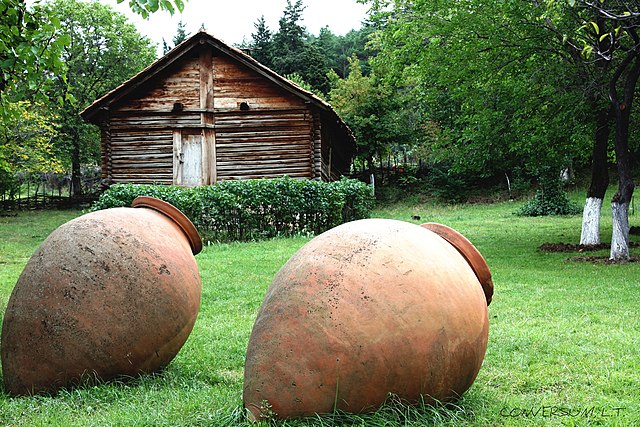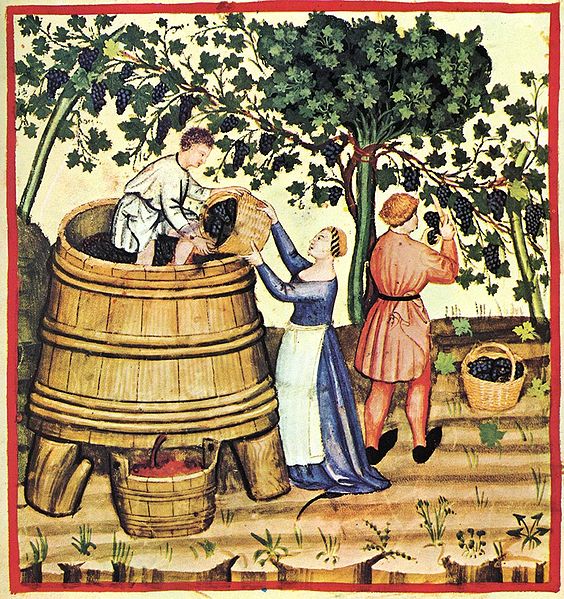Ancient Rome played a pivotal role in the history of wine. The earliest influences on the viticulture of the Italian peninsula can be traced to ancient Greeks and the Etruscans. The rise of the Roman Empire saw both technological advances in and burgeoning awareness of winemaking, which spread to all parts of the empire. Rome's influence has had a profound effect on the histories of today's major winemaking regions in France, Germany, Italy, Portugal and Spain.
A Roman statue of Bacchus, god of wine (c. 150 AD, copied from a Hellenistic original, Prado Museum, Madrid).
A painted Lararium (shrine) depicting Mercury (god of commerce) and Bacchus (god of wine) in Pompeii, in one of the hot-food establishments (thermopolia) that served the city prior to its destruction.
Ancient Roman amphoras in Pompeii
The 'Foro Boario' vineyard at Pompeii, replanted as it was at the time of the eruption, with small wine press in structure at back.
Wine is an alcoholic drink made from fermented fruit. Yeast consumes the sugar in the fruit and converts it to ethanol and carbon dioxide, releasing heat in the process. Wine is most often made from grapes, and the term "wine" generally refers to grape wine when used without any qualification. Even so, wine can be made from a variety of fruit crops, including plum, cherry, pomegranate, blueberry, currant, and elderberry.
Glasses of red and white wine
Georgian clay vessels, historically used in wine making.
The Areni-1 cave in Armenia is home to the world's oldest known winery.
Pressing wine after the harvest; Tacuinum Sanitatis, 14th century








